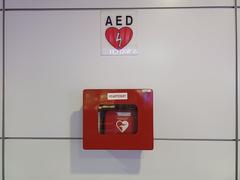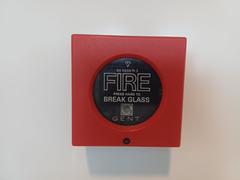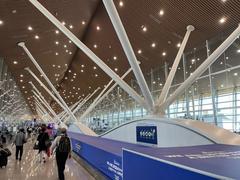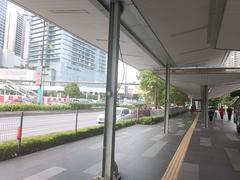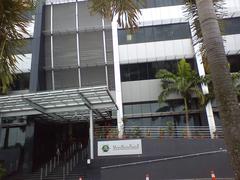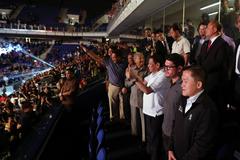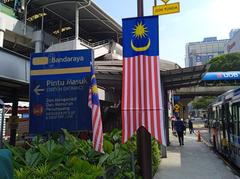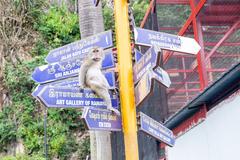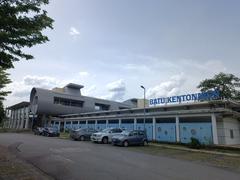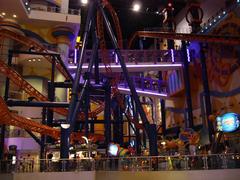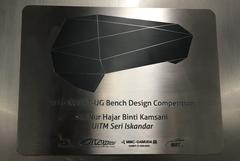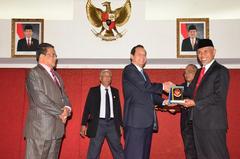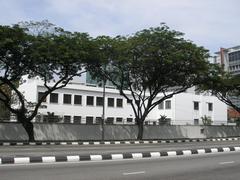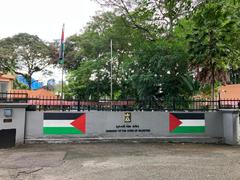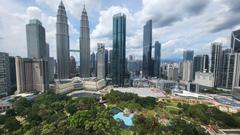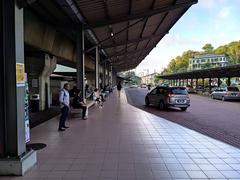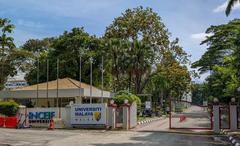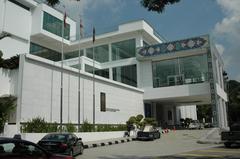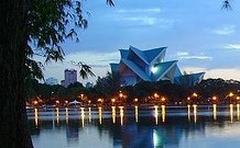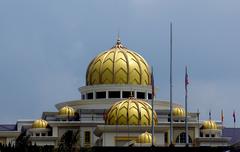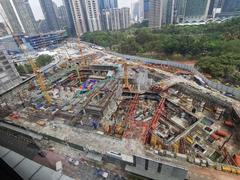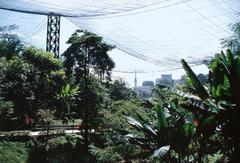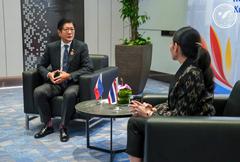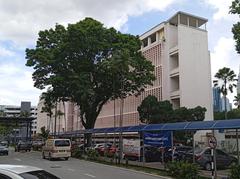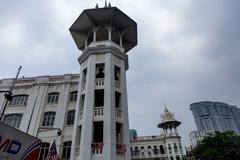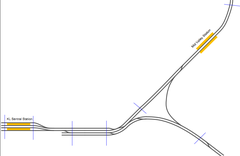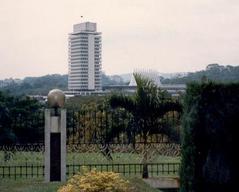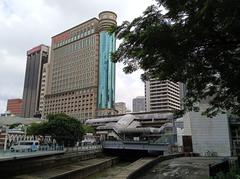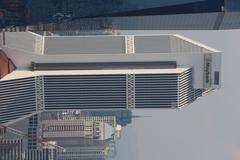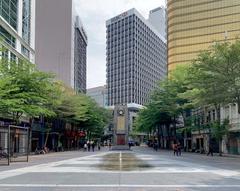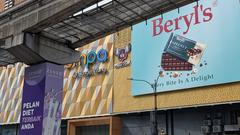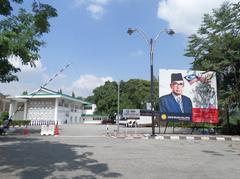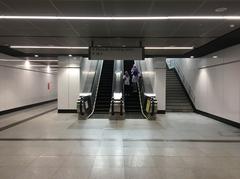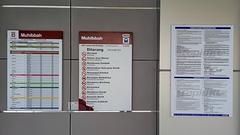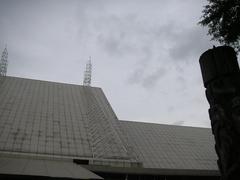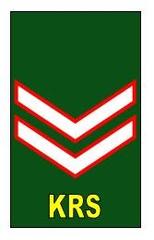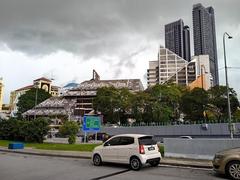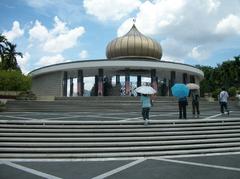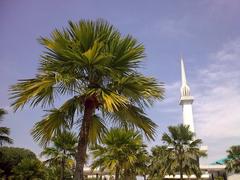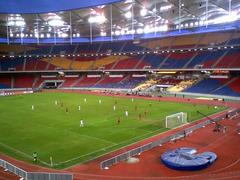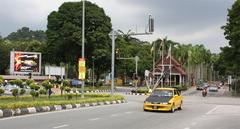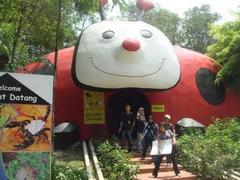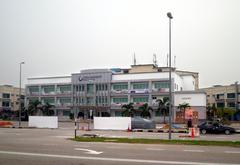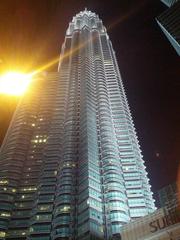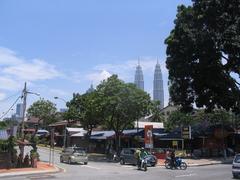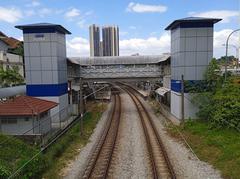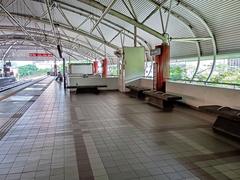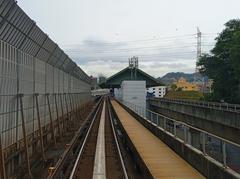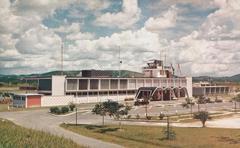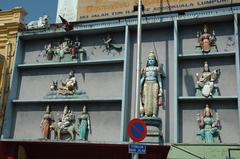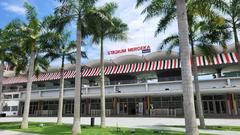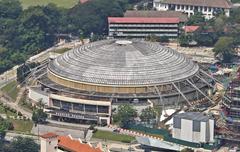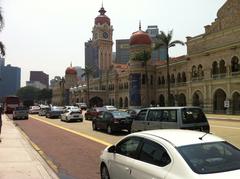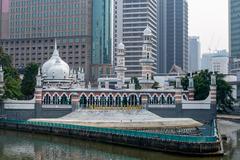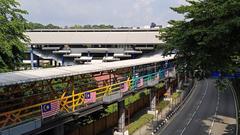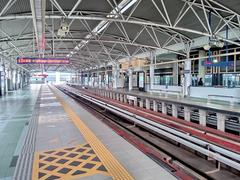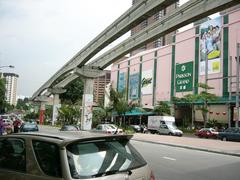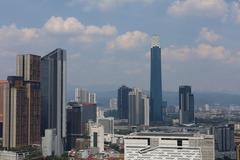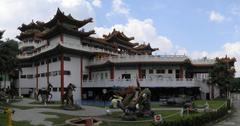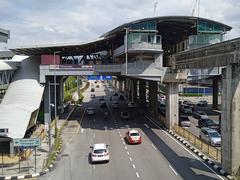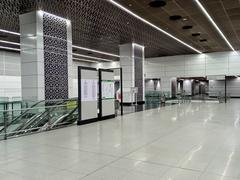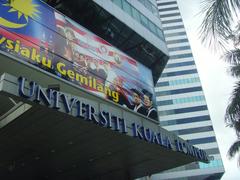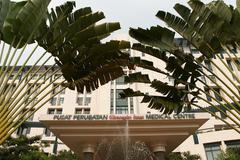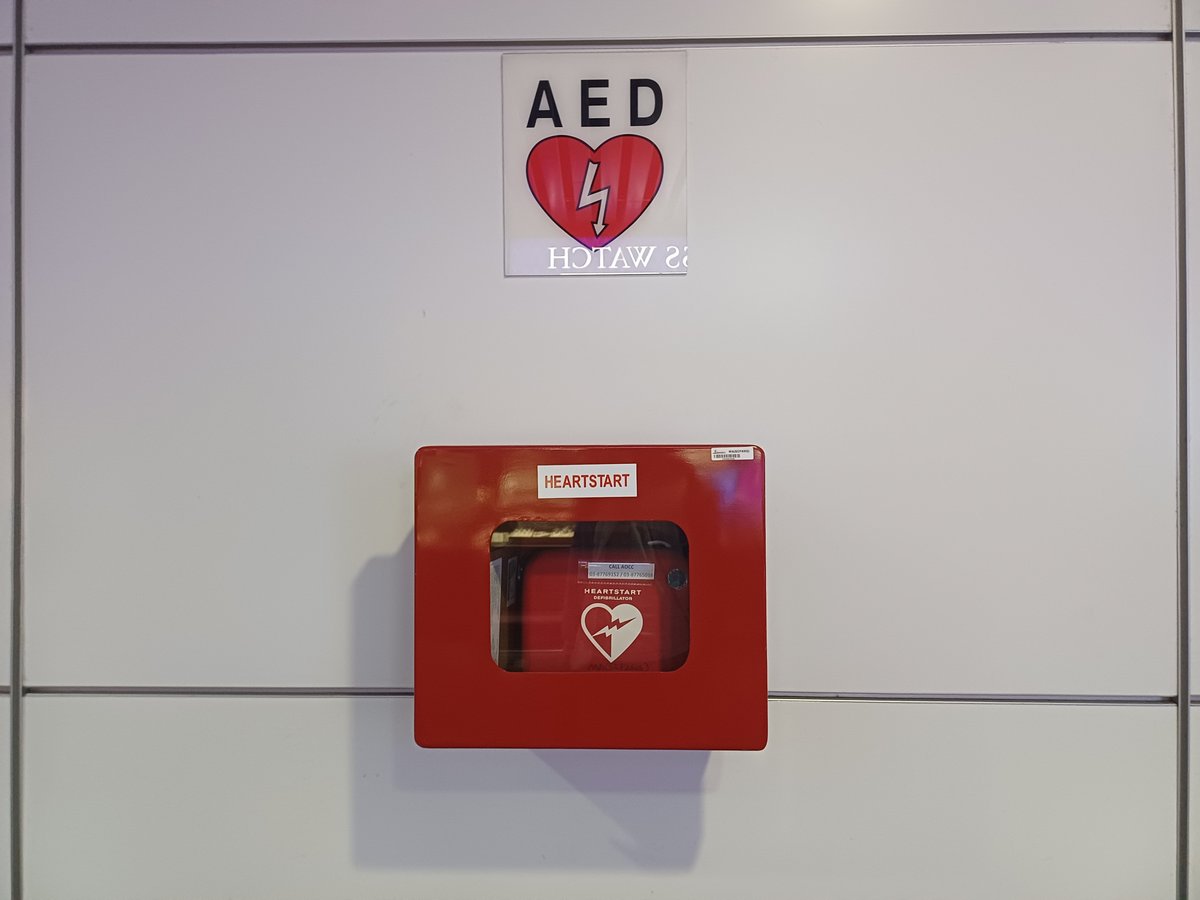
Kuala Lumpur International Airport (KLIA) Visitor Guide: Tickets, Hours, and Travel Tips
Date: 14/06/2025
Introduction
Kuala Lumpur International Airport (KLIA) is Malaysia’s leading aviation gateway, connecting millions of travelers to domestic and international destinations. Since its opening in 1998, KLIA has pioneered airport technology and design, blending modern functionality with architectural themes inspired by Malaysian heritage (Today’s Flashback). Located in Sepang, about 50 kilometers south of Kuala Lumpur, the airport was built to address the growing demand for air travel and to establish Malaysia as a key Southeast Asian aviation hub.
This guide covers KLIA’s historical background, architectural highlights, visitor information, transportation options, accessibility features, and ongoing infrastructure upgrades (KLIA Facilities). It also spotlights the Sultan Abdul Samad Building, a central historical landmark in Kuala Lumpur, renowned for its Moorish architecture and significance in Malaysia’s colonial and post-independence history (Visit Kuala Lumpur). Whether you’re a first-time visitor, a transit passenger, or a history enthusiast, this guide provides the essential information and practical tips to ensure a smooth, enriching travel experience.
Table of Contents
- Welcome to KLIA: Your Gateway to Malaysia and Beyond
- Historical Background of KLIA
- Practical Visitor Information
- Recent Developments and Upgrades
- Future Developments and Expansion Plans
- Frequently Asked Questions (FAQ)
- Sultan Abdul Samad Building: Kuala Lumpur’s Heritage Icon
- Accessibility and Special Assistance at KLIA
- Summary and Call to Action
- References
Welcome to KLIA: Your Gateway to Malaysia and Beyond
KLIA is designed to streamline your journey, offering world-class amenities, efficient transport links, and a welcoming atmosphere. This guide brings together everything you need to know for a successful transit, layover, or visit—covering history, operations, facilities, and future plans.
Historical Background of Kuala Lumpur International Airport (KLIA)
Origins and Construction
KLIA was conceived in the early 1990s as Malaysia’s answer to rising air travel demand and the country’s ambitions to become a regional air transport hub. The airport occupies a 10,000-hectare site in Sepang, chosen for its expansion potential and connectivity (Today’s Flashback). Construction began in 1992, culminating in the airport’s inauguration on June 27, 1998.
Architectural Significance
KLIA’s Main Terminal Building (MTB) stands out for its blend of traditional Islamic motifs and modern architectural elements, creating a bright, spacious, and culturally reflective environment (Today’s Flashback). The layout ensures efficient passenger flow, with clear distinctions between domestic and international areas.
Impact and Expansion
The opening of KLIA brought a dramatic boost to Malaysia’s tourism and logistics sectors, positioning the country as a major aviation hub (Today’s Flashback). Responding to the rise of low-cost carriers, KLIA2 was launched in 2014 to handle budget airline operations; a complimentary shuttle bus links KLIA and KLIA2 (Sleeping in Airports).
Technological Innovations
KLIA was the first airport in Asia to incorporate advanced technologies like automated baggage handling, security screening, and the Aerotrain Automated People Mover (APM) system. The Aerotrain, operational since 1998, connects the Main and Satellite terminals, easing international transfers (SoyaCincau).
KLIA’s Role in Malaysian Aviation
KLIA consistently ranks among the world’s most connected airports. In 2018, it was ranked 12th globally by OAG’s Megahubs International Index (klia2.info). In 2024 alone, KLIA welcomed 12 new airlines, 16 resumptions, and 24 new destinations, serving 73 foreign and 6 local carriers (Routes Online; Aviation.MY).
Practical Visitor Information
Operating Hours and Airport Access
KLIA operates 24/7, providing round-the-clock services. While the airport itself is always open, note that some shops and lounges may have specific hours—always check the latest information at airport counters or on the official website.
Tickets and Flight Information
Book tickets directly through airline websites, travel agents, or at airport counters. For low-cost carriers at KLIA2, check the airline’s official channels for boarding and check-in requirements. Self-service kiosks and online check-in are widely available.
Transportation Options
- Express Rail Link (ERL): The KLIA Ekspres takes you to Kuala Lumpur Sentral in about 28 minutes.
- Shuttle Bus: Free shuttle buses connect KLIA and KLIA2.
- Taxis and Ride-Hailing: Fixed-rate taxis and ride-hailing services like Grab operate 24/7.
- Car Rentals: Multiple rental agencies are available in both terminals.
Travel Tips
- Arrive at least 3 hours before international flights.
- During the Aerotrain upgrade, use the shuttle bus for terminal transfers.
- Keep your passport and boarding pass handy.
- Explore amenities such as dining, lounges, and duty-free shops.
Accessibility and Special Services
KLIA offers comprehensive accessibility features, including step-free routes, wheelchair assistance, priority lanes, accessible restrooms, and special service counters (KLIA Facilities). Families have access to baby-care rooms and play areas.
Nearby Attractions
Enjoy a layover at local attractions such as Sepang International Circuit, Putrajaya’s parks, or Kuala Lumpur city highlights.
Recent Developments and Upgrades
Aerotrain Replacement Project
KLIA’s Aerotrain system, in operation since 1998, was suspended in March 2023 following repeated breakdowns (The Edge Malaysia). Malaysia Airports Holdings Berhad (MAHB) is replacing it with a modern system by January 2025, delivered by Alstom Transport Systems and partners (SoyaCincau). Shuttle buses currently cover terminal transfers.
Terminal Optimization
MAHB is implementing upgrades like airline relocations, new self-service check-in kiosks, automated bag drops, and the addition of 20 auto gates. Improvements in kerbside traffic and foreign worker management are also underway (The Star).
Future Developments and Expansion Plans
KLIA Masterplan
To meet future demand, the KLIA Masterplan includes:
- Expanding Terminal 1 capacity from 30 to 59 million passengers per year.
- Increasing Terminal 2 capacity from 45 to 67 million passengers per year.
- Adding a fourth runway.
- Building Terminal 3 to boost overall capacity (The Straits Times).
The total airport capacity will rise to 140 million passengers annually, with increased aircraft movements (The Star).
Specialized Terminals
- Private and Premium Terminal (PPT): Pay-for-use terminal for premium travelers, opening soon (The Star).
- Haj and Umrah Terminal: Designed for 5 million pilgrims per year, pending regulatory approval.
Timeline
Upgrades are scheduled to begin in 2026, with staggered implementation to minimize disruption (Sinar Daily).
Frequently Asked Questions (FAQ)
Q: What are KLIA’s operating hours?
A: KLIA is open 24/7, though some facilities have specific hours.
Q: Where can I buy tickets?
A: Purchase via airline websites, travel agents, or airport counters.
Q: How do I transfer between terminals?
A: Use the Aerotrain (when available) or shuttle buses during upgrades.
Q: What transport options connect KLIA to downtown Kuala Lumpur?
A: KLIA Ekspres train, shuttle buses, taxis, ride-hailing, and car rentals.
Q: Is KLIA accessible for travelers with disabilities?
A: Yes, with comprehensive accessibility and assistance services.
Q: Are there attractions nearby for layovers?
A: Sepang International Circuit, Putrajaya parks, and Kuala Lumpur landmarks.
Sultan Abdul Samad Building: Kuala Lumpur’s Heritage Icon
History and Architecture
Completed in 1897 and designed by A.C. Norman, the Sultan Abdul Samad Building is a masterpiece of Moorish and Mughal-inspired architecture. It features a 41-meter clock tower, ornate copper domes, and elegant arched colonnades. Originally serving as the British colonial administrative center, the building now houses Malaysia’s Ministry of Information, Communications, and Culture (Visit Kuala Lumpur).
Visiting Information
- Location: Adjacent to Merdeka Square, Kuala Lumpur.
- Getting There: 10-minute walk from Masjid Jamek LRT; accessible by taxi, ride-hailing, or on foot from city hotels.
- Visits: The building’s exterior and grounds are accessible at all times. Guided tours of the interior are available from 9:00 AM to 5:00 PM (advance booking required; nominal fee applies). Exterior viewing is free.
Accessibility and Visitor Tips
- The site is wheelchair accessible with ramps and marked paths.
- Visit during weekdays for fewer crowds.
- Wear comfortable shoes; bring a camera to capture architectural details.
Nearby Attractions
- Merdeka Square: Site of Malaysia’s independence declaration.
- Kuala Lumpur City Gallery: Showcases city history.
- Jamek Mosque: One of the city’s oldest mosques.
- Central Market: A hub for Malaysian crafts and cuisine.
Accessibility and Special Assistance at KLIA
KLIA is designed for barrier-free travel. Both terminals feature wide, step-free access, elevators, ramps, tactile guidance for the visually impaired, and accessible restrooms (KLIA Facilities). Services include:
- Wheelchair Assistance: Free, request via airline or at information counters.
- Meet & Greet: Professional assistance with check-in, immigration, and baggage (pre-booking recommended).
- Fast Track/VIP: Expedited security and immigration, available to all travelers for a fee.
- Family Facilities: Strollers and baby-care rooms.
- Transportation: KLIA Ekspres and shuttle buses are wheelchair-friendly (Tour in Planet).
Tips:
Notify your airline at least 48 hours in advance for special assistance. Arrive early and use priority lanes where eligible.
Summary and Call to Action
KLIA is a testament to Malaysia’s vision for world-class, inclusive aviation infrastructure, blending modernity with cultural heritage (Today’s Flashback; Aviation.MY). The airport’s ongoing upgrades and accessibility initiatives ensure a seamless journey for every traveler (KLIA Facilities; SoyaCincau; The Star). Complementing this, the Sultan Abdul Samad Building offers visitors a rich experience of Malaysia’s history and architecture (Visit Kuala Lumpur).
For real-time updates, maps, and curated travel tips, download the Audiala app (Audiala). Plan ahead, stay informed, and make the most of your journey through KLIA and Kuala Lumpur’s heritage sites.
References
- Opening of the Kuala Lumpur International Airport (KLIA) in Malaysia, 1998, Today’s Flashback (https://www.todaysflashback.com/opening-of-the-kuala-lumpur-international-airport-klia-in-malaysia/)
- KLIA Aerotrain Replacement Project and Upgrades, 2024, SoyaCincau (https://soyacincau.com/2024/06/20/klia-aerontrain-now-scheduled-jan-2025-why-taking-so-long/)
- New Terminals and Fourth Runway Considered for KLIA Expansion, 2024, The Star (https://www.thestar.com.my/news/nation/2024/12/12/new-terminals-fourth-runway-being-considered-for-klia-expansion-dewan-rakyat-told)
- Overview of the Aviation Sector in Malaysia, 2025, Aviation.MY (https://www.aviation.my/2025/02/02/overview-of-the-aviation-sector-in-malaysia/)
- KLIA Facilities and Accessibility Information, KLIA Official Website (https://klia.info/facilities/index.htm)
- Top Tips for First-Time Travelers Using KLIA Ekspres, 2023, Tour in Planet (https://tourinplanet.com/top-tips-for-first-time-travelers-using-klia-express/)
- 12 New Airlines, 16 Resumptions and 24 New Destinations Boosted Connectivity in 2024, Routes Online (https://www.routesonline.com/airports/9835/malaysia-airports-holdings-berhad/news/299664085/12-new-airlines-16-resumptions-and-24-new-destinations-boosted-connectivity-in-2024/)
- Visiting the Sultan Abdul Samad Building, Official Tourism Website, Visit Kuala Lumpur (https://www.visitkl.gov.my)
